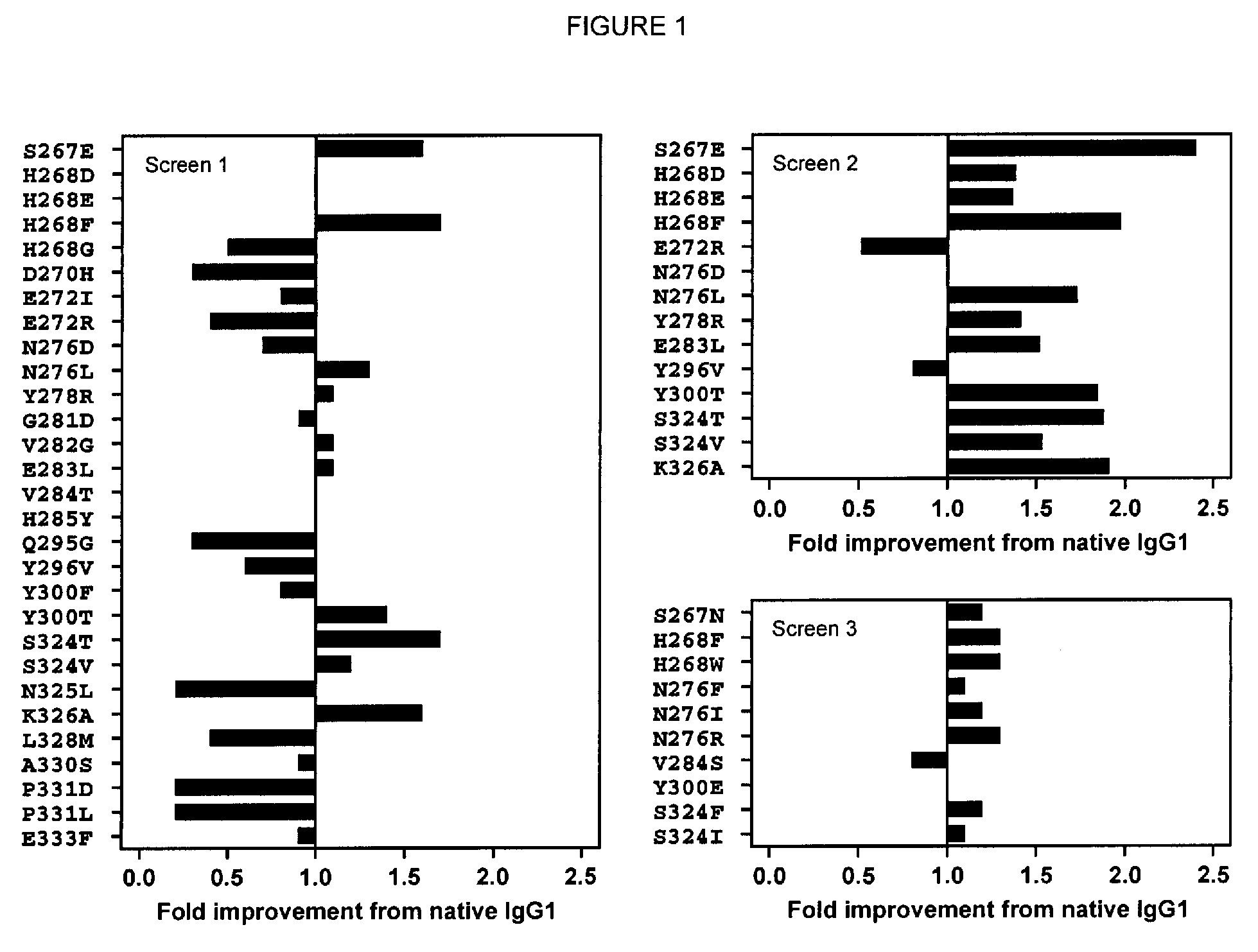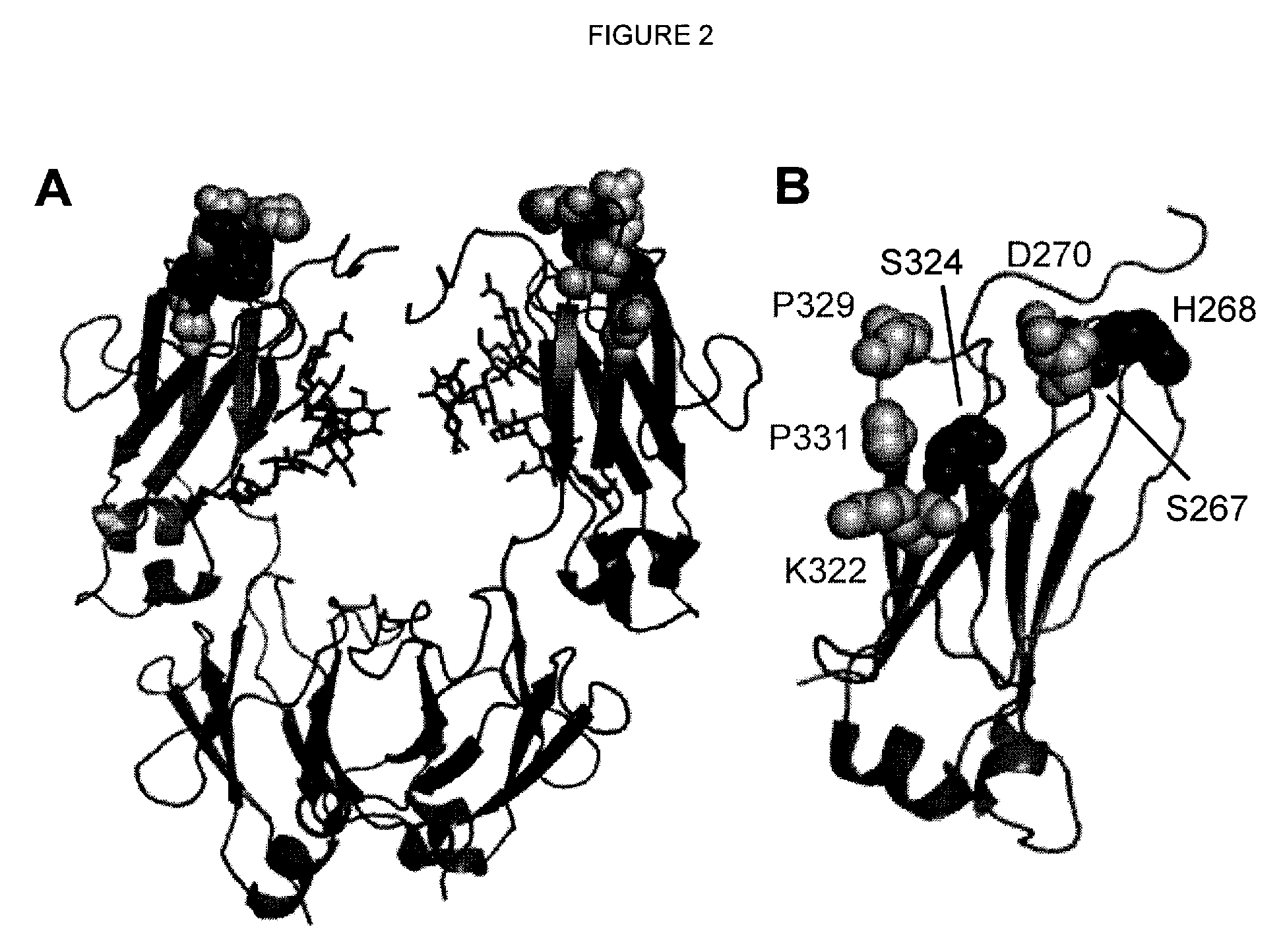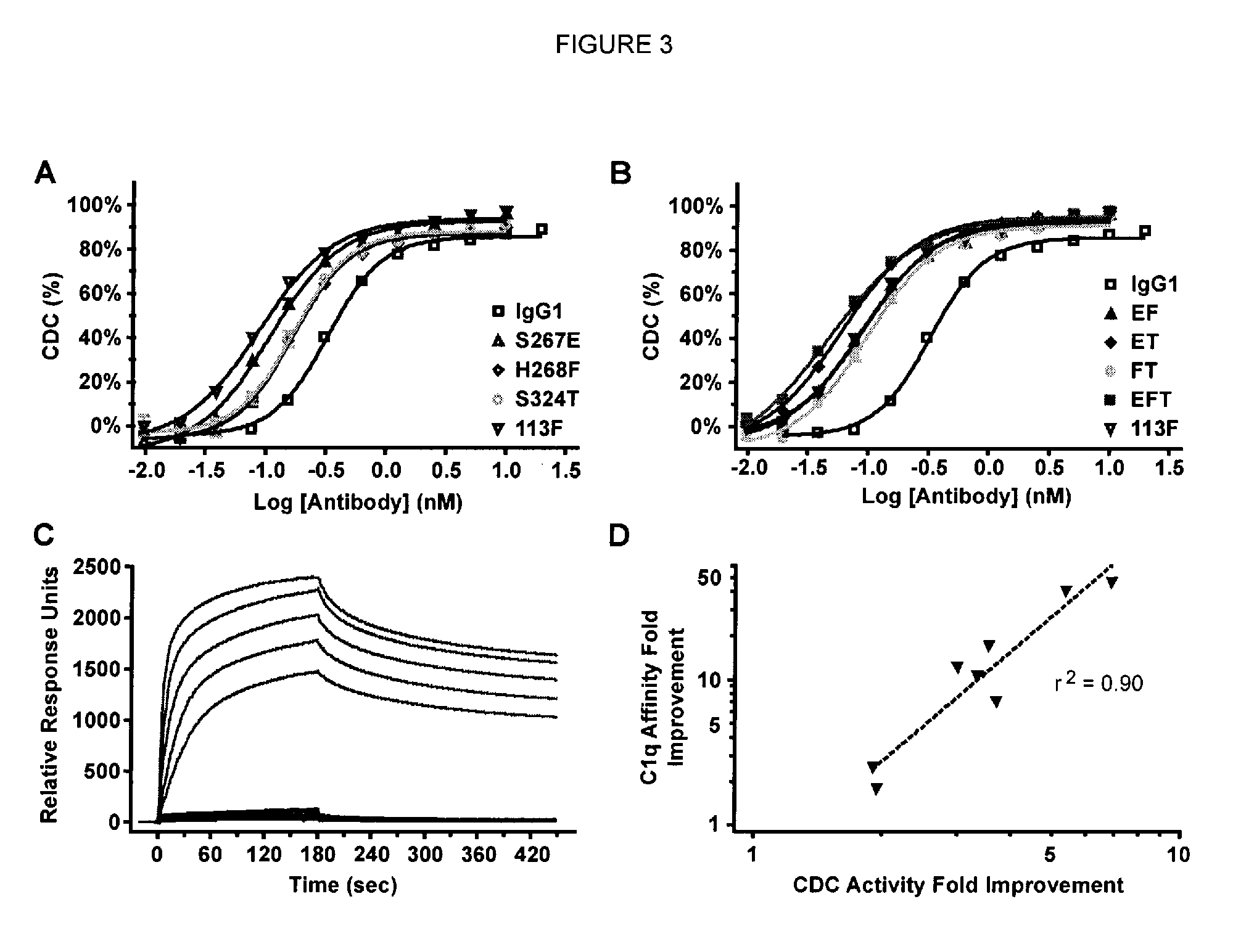Antibody variants with enhanced complement activity
- Summary
- Abstract
- Description
- Claims
- Application Information
AI Technical Summary
Benefits of technology
Problems solved by technology
Method used
Image
Examples
example 1
Engineering of CDC-Enhanced anti-CD20 Antibodies
[0204]Single substitution variants for CDC activity were screened. Variant Fc domains including substitutions were constructed, expressed, and screened in the context of ocrelizumab (Vugmeyster et al., 2005, J Immunother 28[3]:212-9), a humanized anti-CD20 IgG1 antibody. The variable region VH and VL domains of ocrelizumab (also known as PRO70769 or rhuMAb 2H7) anti-human CD20 antibody were generated by gene synthesis (Blue Heron® Biotechnology, Bothell, Wash.) and subcloned into the vector pTT5 (National Research Council, Canada) (Durocher et al., 2002, Nucleic Acids Res 30[2]:E9) encoding human heavy IgG1 and light Cκ constant regions. Substitutions in the Fc domain were introduced using site-directed mutagenesis (QuikChange®, Stratagene, Cedar Creek, TX). Positions are numbered according to the EU index (Kabat et al., 1991). Heavy and light chain constructs were cotransfected into HEK293E cells (National Research Council, Canada) (D...
example 2
Engineering of Anti-CD20 Antibodies with Augmented CDC, ADCC, and ADCP Activity
[0211]In order to develop variants with broadly enhanced effector function, CDC-enhancing substitutions were combined with variants previously characterized for improved FcγR-mediated activity (Lazar et al., 2006, Proc Natl Acad Sci U S A 103[11]:4005-10; Richards et al., 2008, Mol Cancer Ther 7[8]:2517-27). These include two double substitution variants, one with broad affinity enhancement to all FcγRs (239D / 1332E, referred to here as DE), and the other with selective affinity enhancement to FcγRIIa and FcγRIIIa relative to FcγRIIb (G236A / 1332E, referred to as AE). Other modifications for enhancing FcγR and complement interactions include but are not limited to substitutions 298A, 333A, 334A, 326A, 2471, 339D, 339Q, 280H, 290S, 298D, 298V, 243L, 292P, 300L, 396L, 3051, and 396L. These and other modifications are reviewed in Strohl, 2009, Current Opinion in Biotechnology 20:685-691.
[0212]Substitutions wer...
example 3
Engineering of CDC-Enhanced Anti-CD19 and -CD40 Antibodies
[0222]In another experiment, the transferability of the variants to other antibodies was examined. The substitution combination with potent CDC enhancement, EFT+AE, was tested in the context of humanized anti-human CD19 and anti-human CD40 antibodies. Humanized, affinity-optimized 4G7 (Meeker et al., 1984, Hybridoma 3[4]:305-20) anti-human CD19 antibody and humanized S2C6 (Koho et al., 1984, Cancer Immunol Immunother 17[3]:165-72; Paulie et al., 1984, Cancer Immunol Immunother 17[3]:173-9) anti-human CD40 antibody were engineered as described (Lazar et al., 2007, Mol Immunol 44[8]:1986-98; Horton et al., 2008, Cancer Res 68[19]:8049-57). Fc variant versions of the anti-CD19 and CD40 antibodies were constructed by subcloning into the appropriate IgG1 and Cκ pTT5 vectors from ocrelizumab Fc variants. Antibodies were expressed and purified as described above.
[0223]Native IgG1 and CDC-enhanced variants were examined in the CDC as...
PUM
| Property | Measurement | Unit |
|---|---|---|
| Current | aaaaa | aaaaa |
| Capacitance | aaaaa | aaaaa |
| Electric dipole moment | aaaaa | aaaaa |
Abstract
Description
Claims
Application Information
 Login to View More
Login to View More - R&D
- Intellectual Property
- Life Sciences
- Materials
- Tech Scout
- Unparalleled Data Quality
- Higher Quality Content
- 60% Fewer Hallucinations
Browse by: Latest US Patents, China's latest patents, Technical Efficacy Thesaurus, Application Domain, Technology Topic, Popular Technical Reports.
© 2025 PatSnap. All rights reserved.Legal|Privacy policy|Modern Slavery Act Transparency Statement|Sitemap|About US| Contact US: help@patsnap.com



